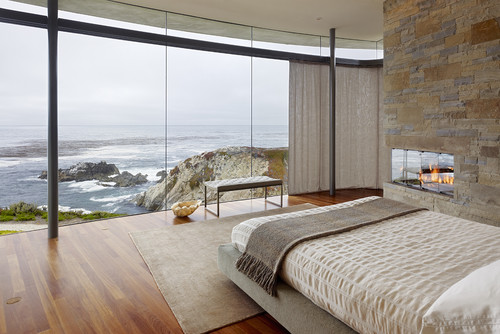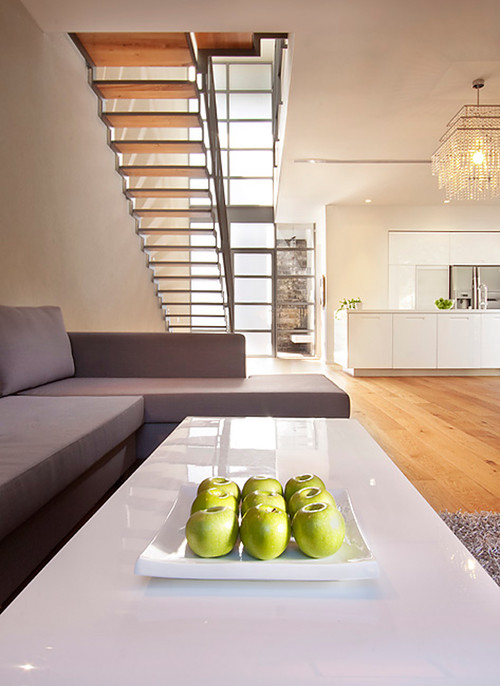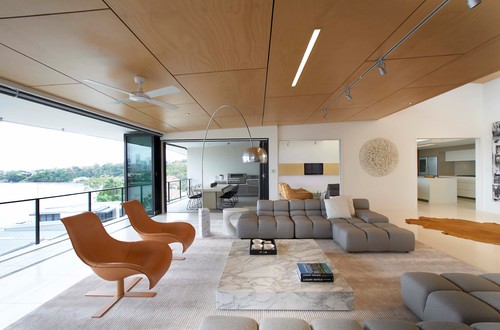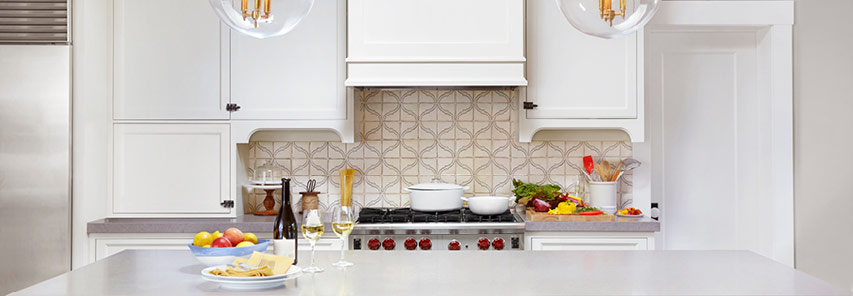How to Refine Remodeling Plans to Fit Your Budget
Editor’s Note: The following article on home renovation and budgeting originally appeared on our web partner Houzz’s website. It is the second part to Houzz’s Dream to Done series – home renovation advice on a budget. Some of the content has been slightly edited from its original version.
Matching your renovation dreams and dollars can sometimes feel like a challenge. But there’s a lot you can do to get the look you want at the right price. In the first story in this series, we laid out the steps in choosing the pros you will work with and setting an initial budget.
Here we’ll focus on how to work with your professionals to sharpen your renovation vision, understand its realistic cost, and refine the plan to match your budget when necessary. You’d follow the same basic process if you’re acting as your own general contractor.

Create Your Dream Plan
Once you’ve chosen the pro (or pros) who’ll be designing and drafting your renovation plan, you’ll move into a deeper conversation about your vision. To prepare, make a list of the things that are driving you crazy about your house. Collect images of homes that inspire you. Your chosen architect, designer or builder will likely ask you a range of questions about how you use the space and how you live day to day. He or she will also want to get a sense of the materials and styles you prefer.
Related: Home Improvement Loans — How to Choose a Loan for Home Renovations
“I think it’s good to share with the architect the pie-in-the-sky ideas,” says Jon Dick of Archaeo Architects in Santa Fe, New Mexico, who has been practicing for 30years and has worked on more than 100 homes. The architect may not incorporate them, but “there might be one nugget of an idea that might inform the whole project.”
These initial conversations are invaluable as architects and designers work through the stages of a project, from initial design plans to final drawings and permitted plans. This design-then-revise process is key to creating a plan you love — that also matches your budget. And it’s part of why coming up with a new home or renovation plan takes time.
The next step is getting a measured drawing that shows the home’s existing conditions, or an accurate rendering of the house as it stands before renovation. “We measure the whole house and get an electronic copy,” says J. Timothy Hance, an architect in Columbia, South Carolina, who has been in business 21 years and has worked on about 850 homes. What the American Institute of Architects refers to as a measured drawing of existing conditions is sometimes called an as-built, so clarify what you mean with the pro you work with. “Once you have an as-built, you’re not throwing away money.… The more information you can put out on a sketch on paper, the less likely you are to make a change in the field or have a surprise.” The drawing becomes a useful tool as the architect creates the renovation plan. These drawings may be done by a design-build firm, general contractor, architect or interior designer.
Next Stop: The Budget Check
Once the architect or designer has crafted initial drawings with dimensions, it’s time for an initial price comparison from contractors, also called a rough order of magnitude cost comparison. This is when you send initial plans out to contractors for pricing.
Keep in mind that these aren’t bids — which in the best (though not all) cases are extremely detailed assessments of what a project will cost to build. Instead, these initial price comparisons are reasonable ballparks for how much a project might cost to build. Keep in mind that the final number will depend on which finishes and materials you, the owner, select. To get an idea of the overall cost of your next renovation project, use this Home Improvement Cost Calculator.
To come up with the rough order of magnitude cost number, the contractor will likely count up the number of doors and windows, look at electrical and plumbing systems, and build out line-item costs based on average per-square-foot costs for the work proposed. “Maybe one contractor says it’s $100,000, another says $150,000, another $200,000,” says Anne Higuera, co-owner of Seattle-based Ventana Construction, which has worked with some 250 clients since it was founded in 2003.
The goal of this initial price comparison is to feel confident enough about the likely cost of your project to move ahead with the architect or designer and pay for additional work to finalize your design plan. “It’s a tool. It’s useful,” Higuera says.
Most of the time, contractors will do the initial price comparison for free, though in parts of the country, an increasing number of firms are beginning to charge.

Get Apples-to-Apples Pricing
Even without fully engineered plans, you can create some standardization among your initial price comparisons by providing contractors with allowances — an industry term for specific cost projections — on items that haven’t yet been selected, such as plumbing, fixtures, sinks or lighting. Ask your architect to provide these — perhaps in unit terms, such as $10 a square foot for tile, or in rough group costs, such as $10,000 total for cabinetry. That way, the only variation between the bids you get are the fees the contractor will charge you for labor, project management, overhead and other costs of doing business.
Recommended: What to Consider When Remodeling on a Budget
Once the numbers are back, your architect or designer can review the initial price comparisons and make sure that the contractors have included the same features. There is no standard way to write up these price comparisons, so one contractor may include all the millwork in the “cabinetry” line item, and another may forget to include the metal supports needed for a kitchen countertop. Your designer can provide a careful eye on the rough order of magnitude costs that come back from the contractors and make sure what has been priced is apples-to-apples.

Refine Your Vision to Match Your Budget
Once you receive the initial cost estimates, reality will hit. If your dream plan pencils out at more than your ideal budget, your architect can use these cost estimates to help you scale back. For example, you may have planned for beautiful custom cabinets that stretch to the top of your 12-foot ceiling. You may not have known that by raising your upper cabinets, you’ve almost quadrupled the cost because your standard cabinet doesn’t go to 12 feet, says Tanner Luster, a general contractor at Luster Custom Homes & Remodeling in Scottsdale, Arizona, who has worked on about 250 homes. So you’ll begin to look at alternatives that better match your budget. This process is known as value engineering.
Even owners fortunate enough to have flexible or even unlimited budgets must decide what features are really worth the price. These are very personal decisions, but as a guideline, it can be helpful to ask yourself what matters most to your family. “What are your top five priorities? What do you want to get out of it?” says Hance, the South Carolina architect. Some clients may know they want a wine cooler. Others may say, “I really want that stove, but I can give up this dishwasher,” Hance says.
Now is a good time to select your contractor from among those who provided initial price comparisons. Contractors can be a big help in working with you and the architect to suggest lower-cost alternatives as your plans develop, but some will go through a round of competitive pricing only once. Still, many contractors, once hired, will work with you to do subsequent price comparisons as you and your architect or designer continue to hash out the details and value-engineer.
Hashing out these details is an iterative process until you reach a fully designed plan with all the products and materials specified and priced. You’ll move from initial concept to fully engineered plans over several iterations. Along the way, you should select all your materials if you can, as this will go far in making sure that you don’t go over budget later. It’s also important to understand what value your project will bring to your home. Check out SoFi’s Home Project Value Estimator to get this information.
Having a good design team on board early in the process can help you determine where to compromise as well as guide you in all the decisions you’ll need to make. “Get all those people together,” advises Brandon Quinton of Cameo Homes in Salt Lake City, a family-run general contracting firm that has been in business since 1976. “The interior designer, they’ve got to collaborate with the architect. The builder just wants to know what to put in.” Together, your team can come up with the best plan for the money. Quinton suggests getting everyone in the same room to hash out the plan, though in this internet age, people could also hold a meeting by phone or Skype.
In this story, we’re laying out a process that is most likely to get you the project you want at the budget you want. You wouldn’t want to put a lot of money into fully developing plans only to find that they are too expensive for you to build.

Pay for Due Diligence
When your design plan is nearly complete, you may want to pay your contractor for a little extra research upfront before you finalize the project scope and budget. “If we’re going to pull out a wall, we want to know: Is it a structural, load-bearing wall? Are we seeing signs of some rot or some water damage?” says Luster, the Arizona contractor. Unanticipated problems can range from a thousand to tens of thousands of dollars to correct, he says. If you have to pull out and replace rotted wood, maybe that Sub-Zero appliance gets nixed.
Some contractors make pre-construction due diligence a regular part of the process. Even if your contractor doesn’t normally take this step before commencing work, you could ask how much the or she would charge to do so. Luster has charged as little as $200 for minor research and as much as $12,000 for a full set of architectural plans. It can be a good step to take before you sign off on the final plan with your contractor, as this kind of research could change the scope of work — and the price.
Related links:
Collect Home Design Photos to Inspire Your Remodel
Jot Down These Measurements Before Remodeling Your Bedroom
Read Reviews of Home Builders Near You






I really like your idea to start with a vision of what you want in your renovation and then to go out and see what it would take. From there, it’s wise to adjust your vision to fit your budget. It’s important to stay within your budget so that you have peace of mind after your renovation is complete. It may not be as wonderful as you’d like if you go over budget and have to worry about expense. http://www.lajoiebrosinc.com